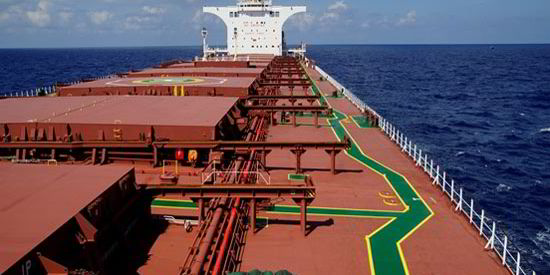Seaport Global Securities increased its outlook for charter rates in dry-bulk shipping, as the industry remains on path to recovery.
Analyst Magnus Fyhr sees "an improving outlook for the dry bulk market with supply and demand growth getting more closely aligned." He increased earnings estimates on publicly traded dry bulk companies thanks to the higher rate deck.
Fyhr expects capesize bulker rates to average $10,000 per day this year, and to increase to $13,000 per day in 2018.
Panamaxes vessels are expected to fetch around $7,500 per day this year, and $9,000 per day next year. And supramaxes could earn $6,500 per day in 2017 and $8,000 per day next year.
"We believe our charter rate assumptions are conservative as they are still at the low end of the historical range," Fyhr said.
The forecasts are "10% below current one-year time charter rates, and in line with the [freight forward agreement] market."
Dry bulk to grow 2%
Given improving world economies, Fyhr estimates the seaborne dry-bulk trade will grow 2% this year, following growth just over 1% last year.
China and its hunger for raw materials remains the locus of the industry. Iron ore cargoes saw steep growth late last year with imports up 14% in November, driving capesize rates up to a 15-month high of $20,000 per day.
Fyhr says the trend should continue as China increasingly favours higher quality iron from Australia and Brazil over its own domestic production. He forecast iron ore shipments to increase 5% this year.
Coal cargoes also saw strong growth last year as China reduced the number of operating days for domestic miners. But Fyhr says coal cargoes may drop 15% this year due to ongoing shift toward cleaner burning fuels.
Shifts in the country's domestic mining policy will drive "short-term swings in seaborne coal imports."
More scrapping needed
While the demand side has stabilised, Fyhr says "structural surplus capacity from the prior cycle needs to be removed before a meaningful recovery can take place."
He notes that the capesize fleet has an average age between seven and eight years old. But there are 175 capesizes above 15 years old. The recent rate strength caused many owners to defer scrapping. But a significant chunk of the older fleet needs to be taken out in order to the recovery more solid.
"We believe at least 25% to 50% of these vessels need to be scrapped over the next two years to balance the capesize market," Fyhr said.



